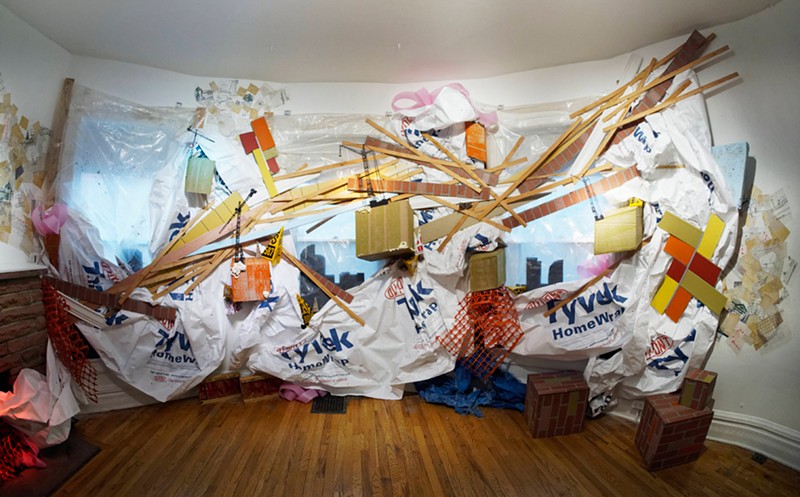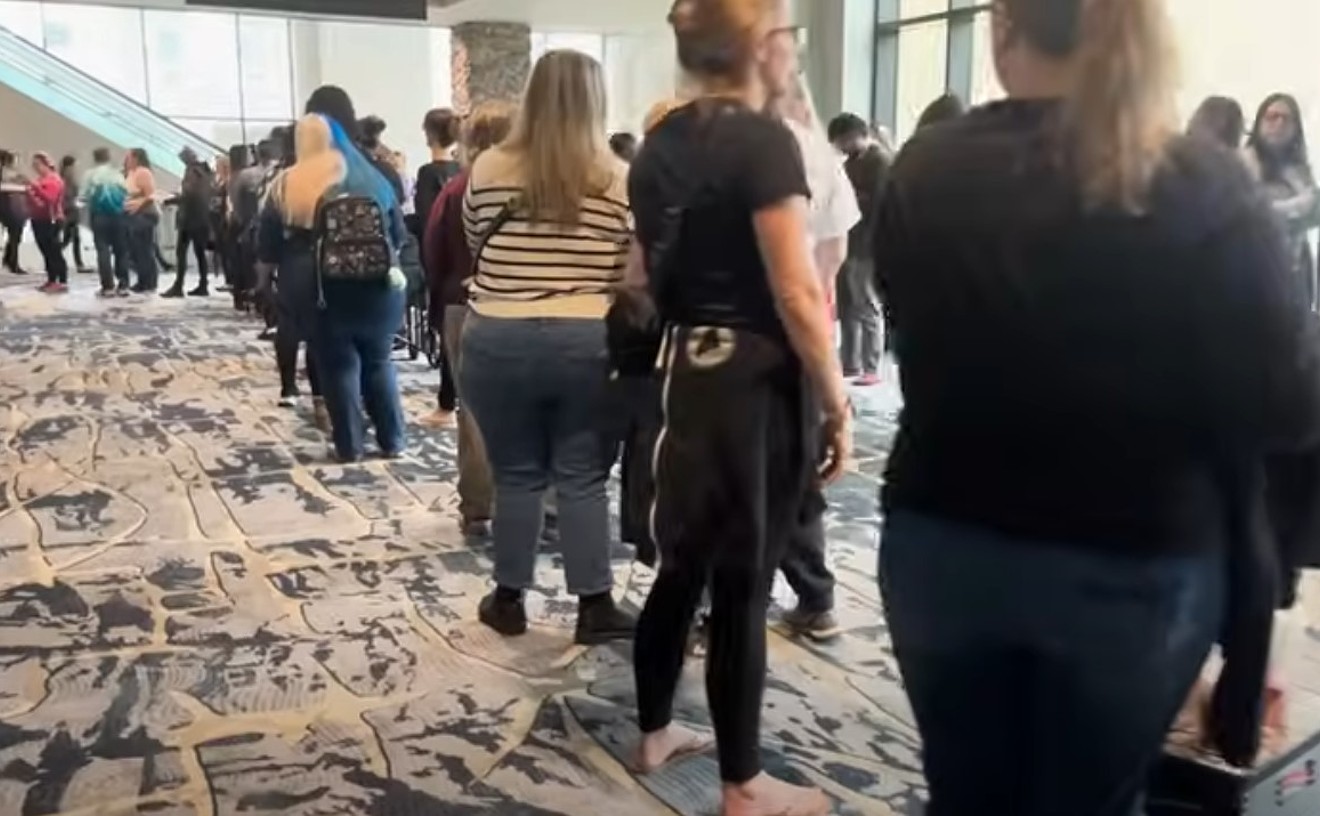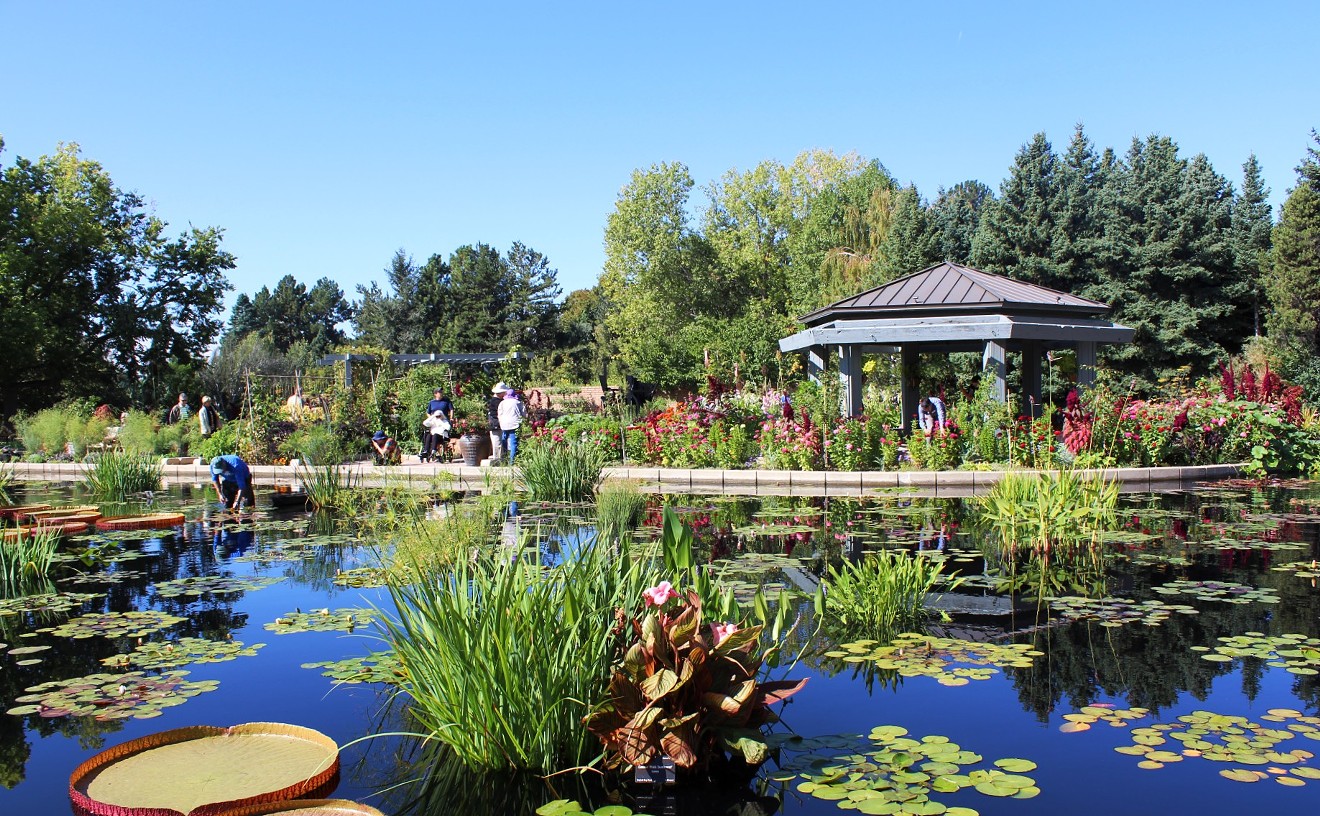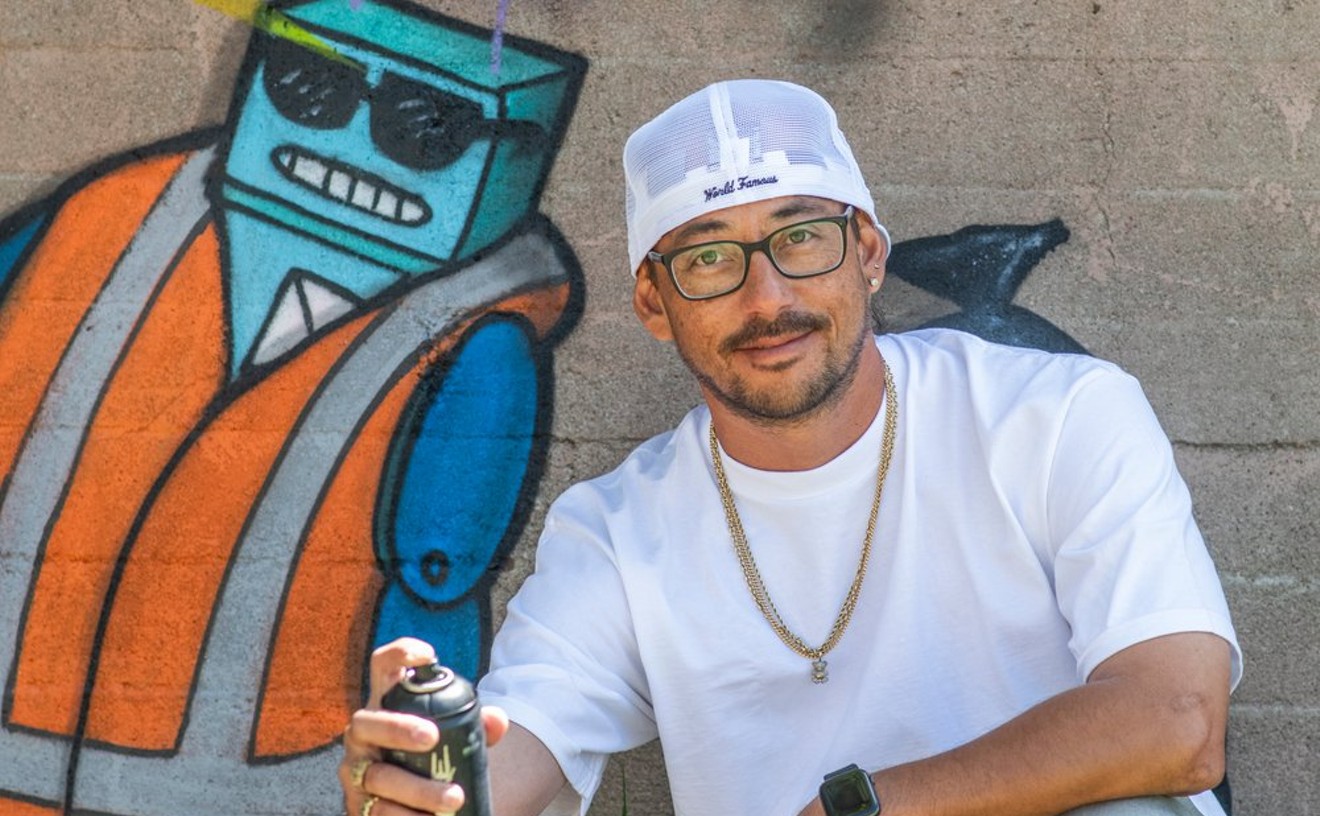At its fullest expression, installation art creates an immersive experience that not only alters a viewer’s perception of the space it occupies, but uses this altered perception to address larger issues. Three artists take three very different approaches to installation art in Finding Home, now on display at Foothills Art Center in Golden, but all address the theme of housing, a hot topic for many artists in Denver, who are losing both studios and spaces where they show their work to the development boom.
The exhibit was curated by Eriq Hochuli, exhibitions manager at Foothills, whose background is in art education. As a setup to the show, in the anteroom directly off the center’s entry lobby, Hochuli presents a series of wall graphics explicating the current housing shortage in the area. In one piece, a historical map depicting the redlining of minority neighborhoods in Denver, where people of color were prevented from getting mortgages, is paired with one showing the neighborhoods currently being gentrified; not surprisingly, they pretty much mirror one another. He has also included interactive elements. For one, viewers are asked to leave notes about their own experiences with the housing crisis, and for another, to insert pushpins into one of four spaces to help gauge the characteristics that people prefer in their own neighborhoods.
While Hochuli chose the show’s three artists — Ramón Bonilla, Lauri Lynnxe Murphy and Pam Fortner — he did not choose the works themselves, which were created specifically for Finding Home. He assigned each artist a separate room in the warren collectively known as Gallery East, then gave them complete freedom to realize their visions.
Bonilla was given the first space, which is also the most formal, because it’s part of what was the parish house of the former church that Foothills occupies and still has its Victorian woodwork, now painted white. For the extremely elegant “Kludge City Nice Scenic View,” Bonilla painted the walls a blackboard black and then did geometric constructivist drawings in dashes of chalk white that wrap entirely around the room, creating a continuous composition of transparent architectonic shapes that interlock with one another; the white woodwork, especially around the window that’s been closed off, functions as frames. Though the drawings are suggestive of enclosures, the specific arrangements of lines would sometimes be impossible in three dimensions. The linear illusions of skeletal structures are made real, though, in the wood-frame sculpture set at a diagonal in one of the corners of the room, where Bonilla has built an outline of a partial cube on a black-painted flat plane laid on the floor. There’s the suggestion of a pyramidal roof capped by a spire, with its missing elements filled in by the viewer’s imagination. The piece also features a boxy wooden contraption with a speaker playing a digital voice reading negative Yelp reviews of a building where Bonilla once lived.
Bonilla uses classic modernism to talk about construction, demolition and the resulting degradation of everyday experience for a city’s residents, and Murphy takes on similar themes in her over-the-top “Fool’s Gold.” She’s used the ubiquitous trash of the new Denver, found-construction debris that litters the landscape and fills the dumpsters of central Denver — such as white sheets of Tyvek and orange-plastic hazard fencing, as well as shards of wood, bits of wallboard and drop cloths — and has draped the materials around the half-circular bay window wall. Peeking out near the center is the classic skyline view of Phillip Johnson’s “cash register building,” partly obscured by the mess in front and around it. That image situates the disaster right here in Denver.
Murphy has obviously installed the elements instinctually, with a riot of different parts somehow jelling into a singular statement, like a soft version of a John Chamberlin car-part sculpture. Though nearly everything is presented in a straightforward fashion, little changed by Murphy other than some folding and twisting, she fabricated a few parts: faux-brick panels in the form of boxes or cubic shapes that refer to the show’s title. Pyrite, known as “fool’s gold,” is a worthless mineral that was sometimes mistaken for gold by early prospectors; Murphy suggests that Denver’s shiny new buildings are just as worthless.
The last of the three installations, Fortner’s “Notice to Quit,” is an elaborate game with a smashing finish. Most of the room is filled with beautifully crafted little houses suspended from the ceiling. The houses are made out of metal rods covered in sheets of paper; little clay figures sit in the doorways of some. Opposite these houses is a wheel divided into numerous wedges, most of them gray, with just a couple in bright colors. The gray wedges contain such comments as “You’re African American” or “You’re Self Employed”; the colored ones hold messages like “You’re White” or “You Drive a Nice Car.” The viewer chooses one of the hanging houses and then spins the wheel; while there’s no penalty if the arrow lands on a colored space, if it lands on a gray one — as it almost always does — the player must hang a weight on the front of the house. The houses are carefully balanced on ceiling-hung rods connected by slides; as more weights are added as the player spins gray again and again, the player’s house invariably pivots over on the slides. As a result, any clay figure in the house crashes to the floor with an emphatic sound, shattering into a thousand pieces. The message is clear: The game of home ownership is stacked against many, rigged for failure.
It’s telling that concerns about housing are showing up more and more in local artists’ work. But it’s a much bigger topic than just an aesthetic one, because the housing shortage is affecting nearly everyone in the local art scene, as studio spaces along with the cheap housing that many artists depend upon continue to disappear.
Finding Home, through July 8 at Foothills Art Center, 809 Fifteenth Street in Golden, 303-279-3922, foothillsartcenter.org.
[
{
"name": "Air - MediumRectangle - Inline Content - Mobile Display Size",
"component": "12017618",
"insertPoint": "2",
"requiredCountToDisplay": "2"
},{
"name": "Editor Picks",
"component": "17242653",
"insertPoint": "4",
"requiredCountToDisplay": "1"
},{
"name": "Inline Links",
"component": "18838239",
"insertPoint": "8th",
"startingPoint": 8,
"requiredCountToDisplay": "7",
"maxInsertions": 25
},{
"name": "Air - MediumRectangle - Combo - Inline Content",
"component": "17261320",
"insertPoint": "8th",
"startingPoint": 8,
"requiredCountToDisplay": "7",
"maxInsertions": 25
},{
"name": "Inline Links",
"component": "18838239",
"insertPoint": "8th",
"startingPoint": 12,
"requiredCountToDisplay": "11",
"maxInsertions": 25
},{
"name": "Air - Leaderboard Tower - Combo - Inline Content",
"component": "17261321",
"insertPoint": "8th",
"startingPoint": 12,
"requiredCountToDisplay": "11",
"maxInsertions": 25
}
]














